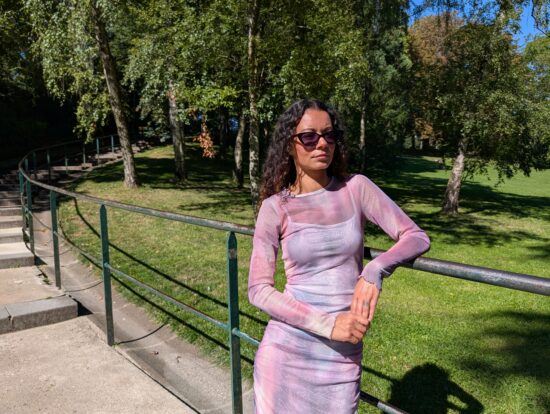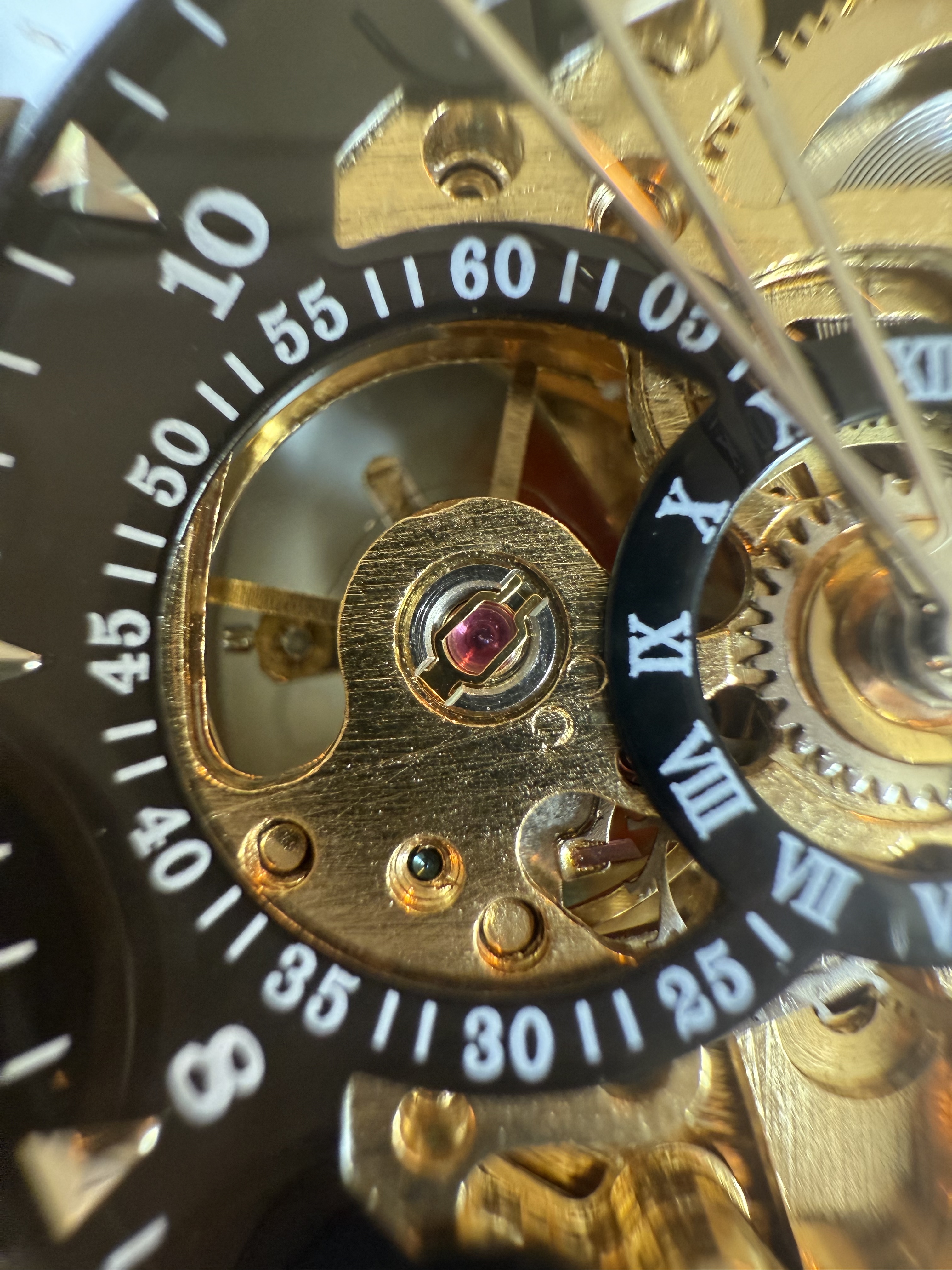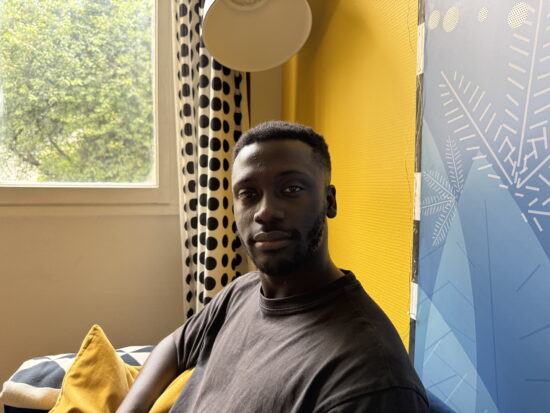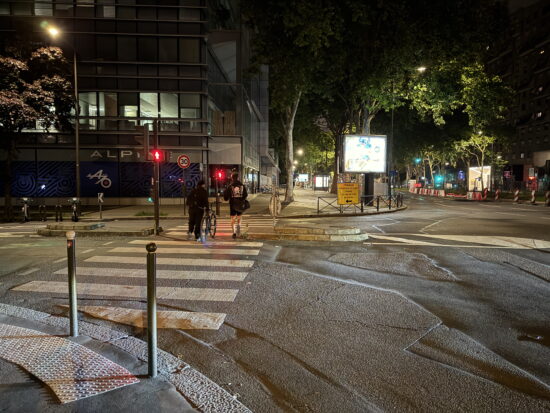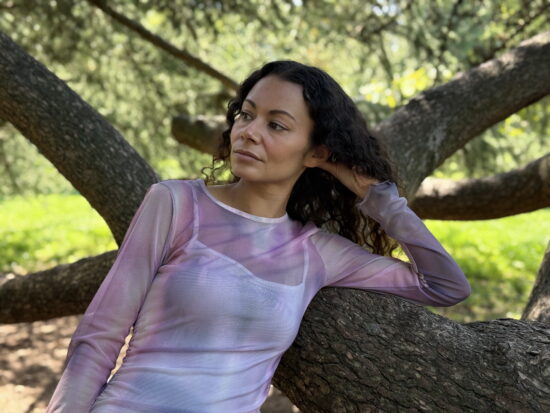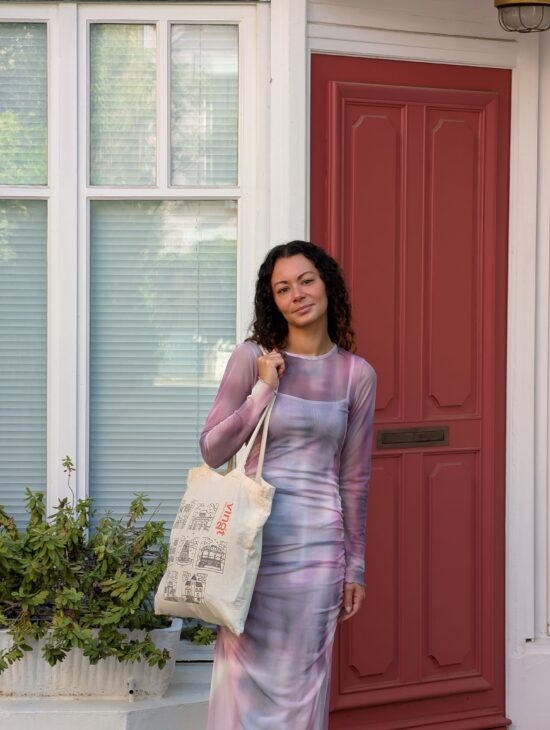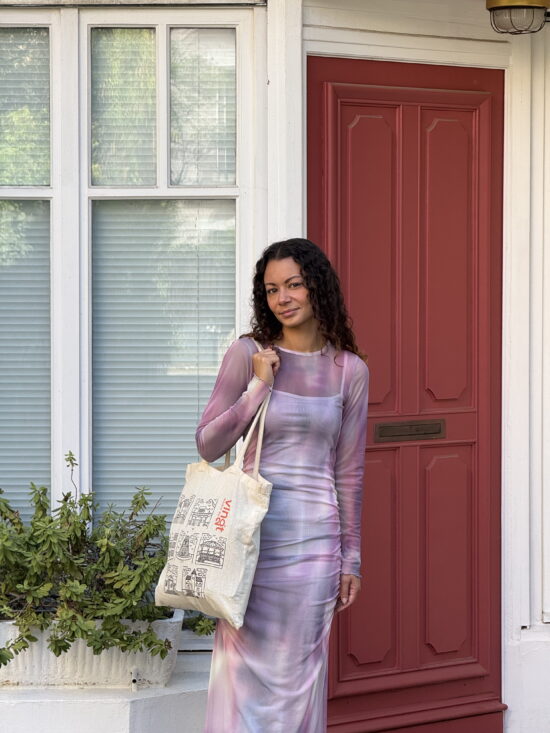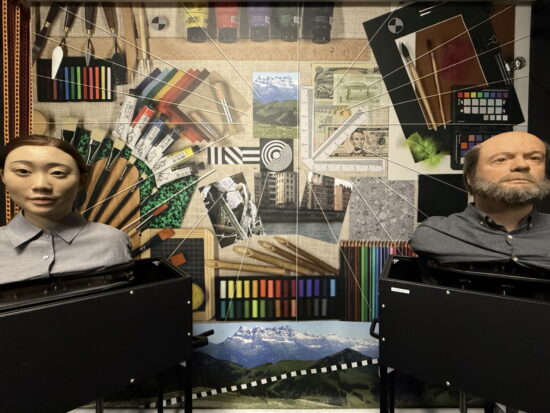We put the Google Pixel 10 Pro XL through our rigorous DXOMARK Camera test suite to measure its performance in photo, video, and zoom quality from an end-user perspective. This article breaks down how the device fared in a variety of tests and several common use cases and is intended to highlight the most important results of our testing with an extract of the captured data.
Overview
Key camera specifications:
- Primary: 50MP 1/1.3″ sensor, 1.2µm pixels, 25mm equivalent f/1.68-aperture lens, Octa PD, OIS
- Ultra-wide: 48MP 1/2.55″ sensor, 0.7µm pixels, 13mm equivalent f/1.7-aperture lens, Quad PD
- Tele: 48MP 1/2.55″ sensor, 0.7µm pixels, 128mm equivalent f/2.8-aperture lens, Quad PD, OIS
Scoring
Sub-scores and attributes included in the calculations of the global score.
Google Pixel 10 Pro XL


Use cases & Conditions
Use case scores indicate the product performance in specific situations. They are not included in the overall score calculations.
Portrait
Portrait photos of either one person or a group of people
Outdoor
Photos & videos shot in bright light conditions (≥1000 lux)
Indoor
Photos & videos shot in good lighting conditions (≥100lux)
Lowlight
Photos & videos shot in low lighting conditions (<100 lux)
Zoom
Photos and videos captured using zoom (more than 1x)
Pros
- Generally good exposure and wide dynamic range for photo and video
- Accurate white balance with generally good skin tones for photo and video
- Few artifacts compared to competition
- Good texture/noise trade-off in daylight, with fine detail and low noise
- Quite reliable autofocus with fast convergence
- Good detail in telephoto shots
Cons
- Local noise in still images, temporal noise in low light video
- Low light detail slightly behind competitors
- Flare in some outdoor scenes
- Slight lack of detail in medium range zoom shots
- Depth estimation artifacts in bokeh mode
The Google Pixel 10 Pro XL delivered a solid performance in the DXOMARK Camera tests, earning itself a spot among the best devices in our current ranking. The latest Google flagship phone uses the same camera modules as its predecessor Pixel 9 Pro XL but, thanks to the new Tensor G5 chipset, camera performance has improved significantly in some areas.
Still images come with good exposure and a wide dynamic range, as well as generally nice colors and accurate white balance. Artifacts are very well under control, with only some ghosting and halo effects occasionally noticeable. The camera also maintains a very good trade-off between noise reduction and detail retention, but cannot quite keep up with the very best in this respect.
The new Pixel captures high levels of detail at the native focal length of its dedicated 5x tele zoom camera module, but a lack of detail and texture is noticeable at shorter tele zoom settings. As for the ultra-wide camera, it delivers a great performance, capturing very detailed images with an expansive field of view.
Like for photo, the Pixel 10 Pro XL is among the best in video mode, thanks to a quite wide dynamic range and nice colors. In terms of white balance control and exposure, it even outperforms some of the very best competitors, such as the Apple iPhone 16 Pro Max. Video detail is quite good and noise levels are kept low in daylight recording, but the texture/noise balance drops somewhat off as the light gets dimmer. Video stabilization is pretty effective, despite some noticeable camera shake when walking during recording.
The Pixel 10 Pro XL also comes with Google’s cloud based Video Boost which provides outstanding video quality. Pro Res Zoom is a feature that enhances image quality at tele zoom factors between 30x and 100x, using generative AI. However, this feature does not activate if a face is detected in the frame to avoid unnatural facial distortions. Other imaging-related AI features include Camera Coach which helps with framing and use of camera modes, based on the scene, as well as intelligent object removal and group shot optimization tools. Keep an eye on our website if you are interested in more information about Video Boost. A dedicated content detailing the impact of Video Boost on the device’s performance will be available soon .
Please note that our tests were conducted using an HDR compatible monitor. All image quality comments are based on viewing on such a monitor.
The Pixel 10 Pro XL does well in low light, with the auto exposure system generally ensuring good exposure of the scene. Compared to its predecessor, on the new Google flagship noise management has been improved significantly, especially when recording video. In addition, the camera produces nice skin tones in low light. On the downside, while video clips offer decent detail, there is a lack of fine detail. Our experts also observed some slight exposure inconsistencies in low light.
The Pixel 10 Pro XL camera renders portraits very well. Skin tones are true to reality, and exposure is generally accurate, even in dimmer conditions. In group shots, all subjects are usually in focus, thanks to a software-enhanced depth of field. In night portraits, some loss of detail on faces is noticeable, however.
Thanks to its dedicated 5x tele module, the Pixel 10 Pro XL captures high levels of detail at a 5x tele zoom ratio. Noise can sometimes be observed locally, but is overall quite well controlled. Between 1x and 5x tele settings, digital zoom crops the main sensor to achieve the desired magnification, resulting in a slight loss of detail.
Between 3x and 5x zoom factors the camera is not capable of maintaining the same level of detail that is captured at the tele and primary camera’s native focal lengths, and a slight drop in detail and texture is noticeable. Overall, for telephoto the Pixel 10 Pro XL lags slightly behind the best in class devices which usually use larger sensors and dual-tele setups. This said, tele-zooming with the new Google flagship is still a quite satisfying experience.
The ultra-wide camera offers a quite expansive field of view at 13mm equivalent. It captures good detail but some image noise can often be noticeable, especially when shooting under indoor lighting.
Test summary
About DXOMARK Camera tests: DXOMARK’s camera evaluations take place in laboratories and real-world situations using a wide variety of use-cases. The scores rely on objective tests for which the results are calculated directly using measurement software in our laboratory setups, and on perceptual tests where a sophisticated set of metrics allow a panel of image experts to compare aspects of image quality that require human judgment. Testing a smartphone involves a team of engineers and technicians for about a week. Photo and Video quality are scored separately and then combined into an overall score for comparison among the cameras in different devices. For more information about the DXOMARK Camera protocol, click here. More details on smartphone camera scores are available here. The following section gathers key elements of DXOMARK’s exhaustive tests and analyses. Full performance evaluations are available upon request. Please contact us on how to receive a full report.
Photo
Google Pixel 10 Pro XL
180
For scoring and analysis, DXOMARK engineers capture and evaluate more than 3,800 test images in controlled lab environments as well as outdoor, indoor and low-light natural scenes, using the camera’s default settings. The photo protocol is designed to take into account the main use cases and is based on typical shooting scenarios, such as portraits, landscape and zoom photography. The evaluation is performed by visually inspecting images against a reference of natural scenes, and by running objective measurements on images of charts captured in the lab under different lighting conditions from 0.1 to 10,000+ lux and color temperatures from 2,300K to 6,500K.

Main
Google Pixel 10 Pro XL
184
The Pixel 10 Pro XL does very well in still image mode. Images show good exposure, with a wide dynamic range. Our testers only noticed occasional low contrast on faces in very difficult light conditions. Detail rendering is good, with only some local loss of detail, mainly in difficult light situations, such as backlit scenes. Image noise is pretty well under control, too, with noise only becoming more intrusive in night shots or the shadow portions of the frame. Overall, unwanted artifacts are well under control as well, but in bright daylight flare can be quite intrusive. Our experts also noticed some ringing and, very rarely, hue shifts.
Close-Up
In macro mode the Pixel 10 Pro XL captures images with quite high levels of detail at the center of the frame. However, sharpness and detail drop off noticeably towards the edges. Our testers also found color rendering to be somewhat dull in some low light macro scenes, but with indoor macro shots the Pixel applies a warmer white balance than the iPhone 16 Pro Max.

Exposure
Google Pixel 10 Pro XL
134
Exposure is one of the key attributes for technically good pictures. The main attribute evaluated is the brightness level of the main subject through various use cases such as landscape, portrait, or still life. Other factors evaluated are the global contrast and the ability to render the dynamic range of the scene (ability to render visible details in both bright and dark areas). When the camera provides Photo HDR format, the images are analyzed with a visualization on an HDR reference monitor, under reference conditions specified in the ISO-22028-5 standard. Repeatability is also important because it demonstrates the camera's ability to provide the same rendering when shooting several images of the same scene.
The Pixel 10 Pro XL camera’s target exposure is generally accurate on portraits and landscape images. In addition, the wide dynamic range ensures decent detail, even in the highlight portions of the frame.
It is also worth mentioning that the Google camera struggles with rendering faces in backlit scenes. In such conditions local contrast is often slightly low on faces.

Color
Google Pixel 10 Pro XL
133
Color is one of the key attributes for technically good pictures. The image quality attributes analyzed are skin-tone rendering, white balance, color shading, and repeatability. For color and skin tone rendering, we penalize unnatural colors according to results gathered in various studies and consumer insights while respecting the manufacturer's choice of color signature.
The latest Google flagship phone provides excellent color rendering in most use cases, earning itself a position among the best in the color ranking. Skin tones look nice and natural, even on fine skin detail, and our testers found white balance to be quite neutral across most test scenes.

Autofocus
Google Pixel 10 Pro XL
135
Autofocus tests concentrate on focus accuracy, focus repeatability, shooting time delay, and depth of field. Shooting delay is the difference between the time the user presses the capture button and the time the image is actually taken. It includes focusing speed and the capability of the device to capture images at the right time, what is called 'zero shutter lag' capability. Even if a shallow depth of field can be pleasant for a single subject portrait or close-up shot, it can also be a problem in some specific conditions such as group portraits; Both situations are tested. Focus accuracy is also evaluated in all the real-life images taken, from infinity to close-up objects and in low light to outdoor conditions.
The Google Pixel 10 Pro XL’s autofocus performs accurately in most situations. In our test samples we only found a few inconsistencies in series of consecutive shots. Like the previous generation Pixel 9 Pro XL, the Pixel 10 Pro XL uses a detail recovery algorithm that helps maintain good sharpness on background faces in group shots, despite the camera’s large f/1.68 aperture. However, this feature also results in sharpness differences between face and body. Overall, depth of field feels a little wider than on the Pixel 9 Pro XL, but is still more limited compared to the best in class competitors that feature variable apertures.

Texture
Google Pixel 10 Pro XL
132
Texture tests analyze the level of details and the texture of subjects in the images taken in the lab as well as in real-life scenarios. For natural shots, particular attention is paid to the level of details in the bright and dark areas of the image. Objective measurements are performed on chart images taken in various lighting conditions from 0.1 to 10,000+ lux and different kinds of dynamic range conditions. The charts used are the proprietary DXOMARK chart (DMC), and the Dead Leaves chart. We also have an AI based metric for the level of details on our realistic mannequins Eugene and Diana.
The Google Pixel 10 Pro XL captures quite high levels of detail, with detail rendering that is very close to the predecessor Pixel 9 Pro XL. A slight loss of detail is noticeable in low light conditions, but blur on moving subjects in the frame is usually well under control, even in dimmer scenes.

Noise
Google Pixel 10 Pro XL
129
Noise tests analyze various attributes of noise such as intensity, chromaticity, grain, structure on real-life images as well as images of charts taken in the lab. For natural images, particular attention is paid to the noise on faces, landscapes, but also on dark areas and high dynamic range conditions. Noise on moving objects is also evaluated on natural images. Objective measurements are performed on images of charts taken in various conditions from 0.1 to 10000 lux and different kinds of dynamic range conditions. The chart used is the Dead Leaves chart and the standardized measurement such as Visual Noise derived from ISO 15739.
Image noise is mostly well controlled on the Google Pixel 10 Pro XL, especially when shooting in daylight. However, in lower light, for example night scenes, noise can be quite intrusive, especially closer to the edges and in the shadow portions of the frame.
The artifacts evaluation looks at flare, lens shading, chromatic aberrations, geometrical distortion, edges ringing, halos, ghosting, quantization, unexpected color hue shifts, among others type of possible unnatural effects on photos. The more severe and the more frequent the artifact, the higher the point deduction on the score. The main artifacts observed and corresponding point loss are listed below.

Bokeh
Google Pixel 10 Pro XL
175
Bokeh is tested in one dedicated mode, usually portrait or aperture mode, and analyzed by visually inspecting all the images captured in the lab and in natural conditions. The goal is to reproduce portrait photography comparable to one taken with a DLSR and a wide aperture. The main image quality attributes paid attention to are depth estimation, artifacts, blur gradient, and the shape of the bokeh blur spotlights. Portrait image quality attributes (exposure, color, texture) are also taken into account.
The Pixel 10 Pro XL portrait mode delivers pretty good results, with nice skin tones and accurate target exposure. However, the segmentation of fine details, such as the subject’s hair, remains an area for improvement. Here the Pixel lags behind the best in class devices which are capable of isolating very fine detail from the background and make it look natural. Our testers also noticed a slight lack of detail on the subject and aliasing along edges.

Tele
Google Pixel 10 Pro XL
169
All image quality attributes are evaluated at focal lengths from approximately 40 mm to 300 mm, with particular attention paid to texture and detail. The score is derived from a number of objective measurements in the lab and perceptual analysis of real-life images.
The new Google flagship phone offers a good telephoto shooting experience overall, with the camera capturing good detail at a 5x tele zoom factor. Noise is overall quite well under control but becomes noticeable in the shadows and in backlit scenes at 5x and longer zoom settings. At shorter telephoto factors (less than 5x) digital zoom is used. At these settings detail is inconsistent and drops before going back up again at 5x where the dedicated tele camera takes over. At shorter tele settings noise is also noticeable, mainly in portrait shots and areas of plain color.

UltraWide
Google Pixel 10 Pro XL
169
These tests analyze the performance of the ultra-wide camera at several focal lengths from 12 mm to 20 mm. All image quality attributes are evaluated, with particular attention paid to such artifacts as chromatic aberrations, lens softness, and distortion. Pictures below are an extract of tested scenes.
The Pixel’s ultra-wide camera offers an expansive 13mm equivalent field of view. Images show good detail but some noise can be noticeable, especially when shooting under typical indoor lighting. Our testers also noticed some ringing in daylight shots.
Video
Google Pixel 10 Pro XL
172
DXOMARK engineers capture and evaluate almost 3 hours of video in controlled lab environments and in natural low-light, indoor and outdoor scenes, using the camera’s default settings. The evaluation consists of visually inspecting natural videos taken in various conditions and running objective measurements on videos of charts recorded in the lab under different conditions from 0.1 to 10000+ lux and color temperatures from 2,300K to 6,500K.
The Google Pixel 10 Pro XL is a great choice for shooting smartphone videos, thanks to very few exposure adaptation issues, generally good exposure and a quite wide dynamic range. In bright light recording, footage shows a good balance between noise reduction and detail retention, and color rendering is pleasant and stable. That said, our testers noticed a few exposure inconsistencies and the Google phone is not quite on par with the best in class in terms of stabilization.
The Pixel 10 Pro XL video mode was tested in HDR mode at 4K resolution and 30fps (maximum frame rate in HDR mode), which provides the overall best results. In addition, outside of our typical protocol, we also performed tests using Google’s Video Boost mode at 4K and 60fps (up to 8K at 30fps is available). While the results of video boost were not included in the final video score, In this mode the Pixel 10 Pro XL scored an outstanding 175, crushing the competition in the DXOMARK video test.

Main
Google Pixel 10 Pro XL
186

Exposure
Google Pixel 10 Pro XL
127
Exposure tests evaluate the brightness level of the main subject, the global contrast and the ability to render the dynamic range of the scene (ability to render visible details in both bright and dark areas). When the camera provides Video HDR format, the videos are analyzed with a visualization on an HDR reference monitor, under reference conditions specified in the metadata. Stability and temporal adaption of the exposure are also analyzed.
Pixel 10 Pro XL videos offer a wide dynamic range and generally good exposure but our testers saw some occasional underexposure in difficult light situations. We also noticed a few exposure inconsistencies in low light, and slightly jerky adaptation in changing light conditions.

Color
Google Pixel 10 Pro XL
131
Image-quality color analysis looks at color rendering, skin-tone rendering, white balance, color shading, stability of the white balance and its adaption when light is changing.
Video footage features nice colors and natural skin tones. Our testers only noticed very few temporal white balance issues with changing scene content.

Autofocus
Google Pixel 10 Pro XL
124
For video, autofocus tests concentrate on focus accuracy, focus stability and analysis of convergence regarding speed and smoothness.
The Pixel 10 Pro XL video autofocus performs quite well, with accurate tracking keeping the subject in focus. Our experts only observed some issues in scenes with subjects in multiple planes. In this kind of situation, the camera did not always lock focus on the subject closest to the camera.

Texture
Google Pixel 10 Pro XL
118
Texture tests analyze the level of details and texture of the real-life videos as well as the videos of charts recorded in the lab. Natural videos recordings are visually evaluated, with particular attention paid to the level of details in the bright and areas as well as in the dark. Objective measurements are performed of images of charts taken in various conditions from 0.1 to 10000 lux. The charts used are the DXOMARK chart (DMC) and Dead Leaves chart.
Google Pixel 10 Pro XL video footage offers high levels of detail. However, in challenging conditions, such as backlit indoor scenes or low light, a slight loss of fine detail can be observed. Compared to the predecessor Pixel 9 Pro this is a slight step backwards.

Noise
Google Pixel 10 Pro XL
129
Noise tests analyze various attributes of noise such as intensity, chromaticity, grain, structure, temporal aspects on real-life video recording as well as videos of charts taken in the lab. Natural videos are visually evaluated, with particular attention paid to the noise in the dark areas and high dynamic range conditions. Objective measurements are performed on the videos of charts recorded in various conditions from 0.1 to 10000 lux. The chart used is the DXOMARK visual noise chart.
Video noise is well under control on the Pixel 10 Pro XL which is a noticeable improvement over the Pixel 9 Pro XL, especially in difficult light. Noise levels are low in daylight recording, but noise is more noticeable in difficult conditions, such as backlit indoor scenes or dim light, where our testers observed shadow noise and noise in areas of plain color.

Stabilization
Google Pixel 10 Pro XL
124
Stabilization evaluation tests the ability of the device to stabilize footage thanks to software or hardware technologies such as OIS, EIS, or any others means. The evaluation looks at residual motion, smoothness, jello artifacts and residual motion blur on walk and run use cases in various lighting conditions. The video below is an extract from one of the tested scenes.
Video stabilization does a good job, especially when standing still during recording. However, when walking or running, camera motion is not fully compensated for. Slight camera shake is noticeable at each step. The best in class competitors are capable of producing smoother walking videos.

Artifacts
Google Pixel 10 Pro XL
89
Artifacts are evaluated with MTF and ringing measurements on the SFR chart in the lab as well as frame-rate measurements using the LED Universal Timer. Natural videos are visually evaluated by paying particular attention to artifacts such as aliasing, quantization, blocking, and hue shift, among others. The more severe and the more frequent the artifact, the higher the point deduction from the score. The main artifacts and corresponding point loss are listed below.

UltraWide
Google Pixel 10 Pro XL
148
All image quality attributes are evaluated at focal lengths from approximately 12 mm to 300 mm, with particular attention paid to texture and smoothness of the zooming effect. The score is derived from a number of objective measurements in the lab and perceptual analysis of real-life video recordings.
The Pixel 10 Pro XL offers a nice video zoom experience, especially when zooming between the ultra-wide and primary camera modules. It also comes with a wider field of view in ultra-wide video than one of its closest competitors, the Apple iPhone 16 Pro Max, and achieves the best results for ultra-wide video among all devices tested to date. In daylight recording, textures look nice and noise is well under control and lower than on the Pixel 9 Pro XL. However, quality drops somewhat in low light, with more intrusive noise and a loss of detail.

Tele
Google Pixel 10 Pro XL
140
When recording with the dedicated tele camera at 5x, the 10 Pro XL delivers high levels of detail, with an excellent texture/noise trade-off in daylight and under indoor lighting. However, a slight lack of detail is noticeable at medium telephoto settings (less than 5x). In addition, the camera is capable of tracking the subject well during video zoom action. However, when switching between the primary and tele cameras during recording an obvious jump is noticeable.


